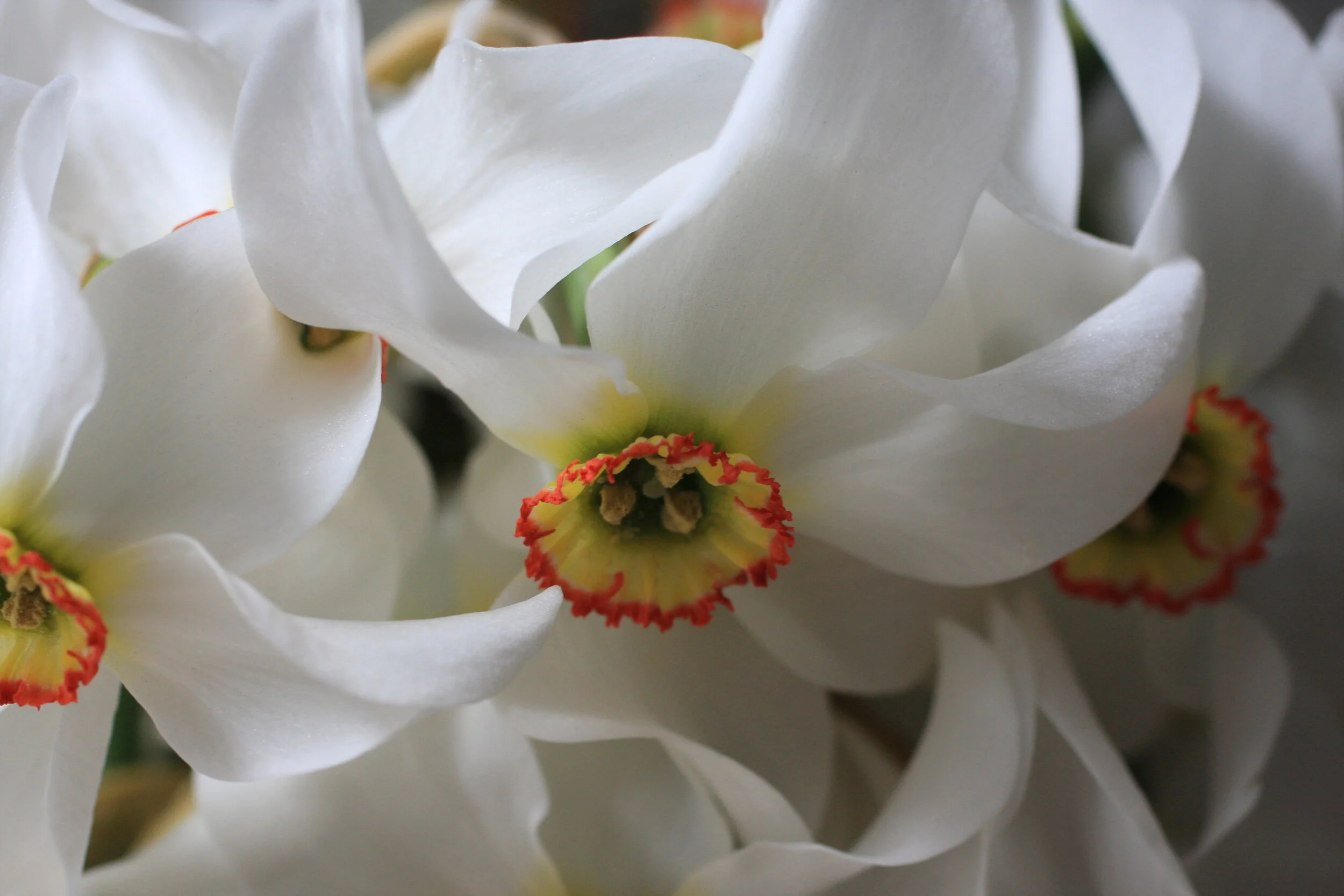Autumn planting for spring reward
/The spring display in my garden needs a lot of work.
Compared to my peak colour explosion of February, there are slim pickings and even slimmer atmosphere to be found in my wee patch in October and the months either side.
I inch through that period, enjoying a scattering of daffodils, sporadic islands of aquilegia and then finally a welcome chorus of tall, bearded irises. All things going well, my self-seeded wall of sweet peas swoop in to save the day. Ultimately though, every spring I feel disappointed that I didn’t take the time to plan ahead.
It takes a little time for those new to gardening to get into this groove of seasonal planning. The forward thinking of choosing and planting months and months in advance of the actual blooming time.
Autumn, to me, has always felt like the wind-down time of my garden and, while that is true for most of my flowering perennials and deciduous trees, it is also the time to be “winding up” by getting my springtime bulbs and corms in the ground to start their work!
For newcomers to gardening, I would introduce bulbs and corms as strange-looking “storage organs” from which your plants will sprout and grow. In very simple terms, bulbs appear layered (like an onion), while corms are more solid. Both enjoy the cold winter ground and offer up flowering goodness to drag you happily out of winter.
In an effort to get the ball rolling, over the last few weeks, I’ve done some feverish online ordering. One of my favourite seed suppliers, Susie Ripley Gardening had added some divine spring bulb offerings that really got me clicking. Miniature-daffodil “Thalia” and the larger “Mount Hood” caught my eye with their creamy whiteness, while the totally luxe tulips; pale “Super Parrot” and velvety crimson “Mascotte” excited me with their over-the-top form and potential for the vase. Caught by nostalgia, I also added some sweet little grape hyacinths to the cart, imagining a lovely little mixed pot with “Thalia” on my porch.
Daffodil “Thalia” from Susie Ripley Gardening
Tulip “Mascotte” - Image supplied by Emerden Flower Farm
My mouse then took me on a trip to Trade Me, where I thought I would try my luck hunting down some alliums. I see these spherical beauties through all the Northern Hemisphere gardens I am inspired by, but rarely spot them for sale as bulbs, rather than seeds. This time, I truly got lucky, scoring some soaring Allium ampeloprasum (sometimes known as wild leek) and my most sought-after find, Allium sphaerocephalon (commonly known as drumstick alliums or round-headed garlic), all from a gardener in Timaru.
Drumstick alliums - image sourced online from DT Brown Seeds
Feeling satisfied that I am at least on the road to a much-improved spring garden, I thought I would pick the minds of some other local nurseries to hear their recommendations from their own offerings.
Sarah Hawkless from Taranaki-based Emerden Flower Farm enjoyed the chance to shop her own curated selection. Citing a number of her anemones as favourites, “Mistral Rarity” sprung out with its painterly petals.
“The ultimate pastel anemone mix! This is, hands down, my favourite mix of anemones. The warmly toned pastel lilacs and odd pinky-blush gems are truly rare in the anemone colour palette, making this mix stand out above the rest. They even have a slight magnolia-esque quality about them with their darker backs of petals and often unique petal shapes as they unfurl open!”
Anemone “Mistral Rarity” - flowers and image from Emerden Flower Farm
Tulip “Foxtrot” from Emerden Flower Farm
I felt redeemed when she also listed tulip “Mascotte” as one of her favourites, while also declaring the tulip “Foxtrot” an ultimate pick. “One of my favourites – and certainly one of the most popular tulip varieties I've ever grown. These peony double heartbreakers start out the softest creamiest blush and slowly open to a mid-flushed pink. Very similar to ‘Angelique’, but ‘Foxtrot’ are hands down the more reliable growers for me!”
I then asked Courtney Chamberlain from Canterbury-based Hadstock Farm for her picks from their selection of bulbs and corms this autumn. “Daffodil ‘Pheasant’s Eye’ the last daffodil to flower in spring. Narcissus poeticus var. recurvus, which is commonly known as Pheasant’s Eye, is a rare and unique daffodil. It is strongly scented and elegantly displays a small, perfect-looking flower with pure white petals that are slightly recurved and a yellow cup with a vibrant orange/red rim. The green lining the cup is what gives ‘Pheasant’s Eye’ its name. Great as a cut flower and ideal for naturalising. This is one of my personal favourite varieties, as my grandfather started growing it and we now have a large patch that we are proud of, after he started out with only a few bulbs.”
Daffodil “Pheasant’s Eye” from Hadstock Farm
Daffodil “Romanus” from Hadstock Farm
A second daffodil Chamberlain holds in high regard is the unusual and beautiful “Romanus”. “Romanus, also known as Romans, is a traditional and very popular daffodil variety that is not often available. ‘Romanus’ is early flowering and is the perfect daffodil to welcome spring. It is highly scented and has multiple small heads on the one stem that are double-layered. I love this variety for its wonderful scent. When we have it growing in the paddock, you can smell it a mile away and when I have it in a vase at home, as soon as I walk in the door I am greeted with the wonderful scent.”
As a multi-generational bulb grower; Chamberlain also included some tips for first-time bulb growers:
Bulbs hate to be waterlogged, as this causes them to rot. When choosing where to plant your bulbs, make sure that they have good drainage.
After flowering, let the leaves die down naturally, as this ensures that the bulb gets the nutrients it needs to flower again next year.
Plant the bulbs at a depth of twice the length of the bulb itself. However, if planting into pots, plant deeper to stop the bulbs from drying out.
When planting out collections of bulbs, aim to plant them at three times the width of the bulb apart, or further apart if you are naturalising large area.
If your bulbs are planted in a pot, after flowering, it is a good idea to put the pot outside in a cool spot, or under a tree in the garden, to stop them getting too hot and drying out.
Buoyed by the prospect of flowering bulbs this spring, I feel less depressed about the impending downtime of the winter months. As always, my garden offers me reconnection to the seasons and constant lessons in patience.
This article was first featured in my Stuff ‘Homed’ gardening column for beginners and The Press on April 15th 2021
All wordsare my own, and images gratefully supplied by Hadstock Farms and Emerden Flower Farm.









